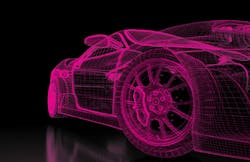This Week's Top Advanced Vehicle Design News
Feb. 17, 2021—When you’re working at a facility called the Gigafactory, you can expect to be working on a large scale.
Celina Mikolajczak, vice president of battery technology for Panasonic North America, said that it can be like orchestrating a symphony, given all the different departments and specialties involved. The factory is ordering raw materials by the hundreds of tons, not kilograms.
“We have to worry about our supply chain if we’re going to build at the scale that Tesla needs, or the electric vehicle industry at all needs,” Mikolajczak said.
She spoke during a presentation at the Consumer Electronics Show earlier this year. Panasonic finds itself in a key position for electric vehicle battery development. The company has had a supply agreement with Tesla for years, but in 2020 it became the lead developer of Tesla’s highly anticipated new battery design—the 4680 (more about that here).
Mikolajczak and Shawn Watanabe, head of energy technology and manufacturing for Panasonic, spoke about the challenges of pushing battery technology forward as part of a high-demand partnership with Tesla.
Big Production
Batteries are complex units, and creating a new design at scale presents big challenges.
“The manufacturing process is moving very very fast,” Mikolajczak said. “If you make a mistake, you have to find it very quickly or you're going to create an enormous amount of scrap.”
Production could create millions of battery cells per day. In order to minimize mistakes and maximize consistency, Panasonic looked to automate much of the process. Watanabe said that nearly 400 Japanese engineers moved to the Reno area to set up the production line and train staff members.
Mikolajczak said that the manufacturing equipment also came from Panasonic HQ in Japan, but it was scaled up for a larger production capacity. Since the beginning, there has been a push to maximize automation.
“One of the big challenges to my engineering team is to continually add automation, add sensors to our equipment,” she said.
